Cage Trolleys - Buyer's Guide
Date Posted:19 September 2024
Choosing the right cage trolley can enhance efficiency, organisation, and safety in your operations.
Cage trolleys are essential tools in various industries, offering a practical solution for transporting and storing goods securely. Their enclosed design makes them ideal for handling smaller items that need to be kept contained during transit. Whether you’re in a warehouse, retail environment, or any setting that requires secure transportation of items, cage trolleys can significantly enhance efficiency and safety. This guide will help you navigate the key features and considerations when choosing the right cage trolley for your needs.
1. Why Choose a Cage Trolley?
Cage trolleys offer several advantages that make them a valuable addition to any operation:
- Secure Transport: The cage design prevents items from falling off or getting damaged during transport. This is especially important for handling smaller or irregularly shaped items that might otherwise be difficult to manage.
- Organisation: Cage trolleys help keep items organised and easily accessible. With their multiple shelves or compartments, you can sort and store items efficiently, reducing time spent searching for specific goods.
- Versatility: These trolleys are suitable for a wide range of applications, from moving goods in a warehouse to transporting products in a retail store. Their design allows them to adapt to various needs and environments.
- Improved Safety: By securely containing items, cage trolleys reduce the risk of accidents and injuries associated with loose or falling goods. This contributes to a safer workplace and prevents damage to items and surroundings.
2. Types of Cage Trolleys
Cage trolleys come in various types, each designed for specific purposes:
- Standard Cage Trolleys: These feature a simple cage structure with mesh sides and a solid base. They are suitable for general-purpose use, including transporting items in warehouses and distribution centres.
- Shelved Cage Trolleys: Equipped with multiple shelves, these trolleys provide additional organisation and storage options. They are ideal for environments where items need to be separated into different compartments.
- Foldable Cage Trolleys: Designed for easy storage, these trolleys can be folded down when not in use. They are perfect for environments where space is limited and the trolley needs to be stored compactly.
- Heavy-Duty Cage Trolleys: Built to handle larger loads, these trolleys feature reinforced frames and stronger materials. They are suitable for transporting heavy or bulky items in demanding environments.
- Lockable Cage Trolleys: These trolleys come with lockable doors or compartments, providing extra security for valuable or sensitive items. They are commonly used in retail and healthcare settings.
3. Key Features to Consider
When selecting a cage trolley, consider the following features to ensure it meets your specific needs:
- Load Capacity: Assess the trolley’s load capacity to ensure it can handle the weight of the items you need to transport. Choosing a trolley with the appropriate capacity will prevent overloading and ensure safe operation.
- Material: Cage trolleys are typically made from materials like steel, aluminium, or plastic. Steel trolleys offer strength and durability, making them suitable for heavy-duty use. Aluminium trolleys are lightweight and resistant to corrosion, ideal for outdoor or moist environments. Plastic trolleys are lightweight and easy to clean, making them suitable for indoor use.
- Wheel Quality: The wheels of the trolley are crucial for manoeuvrability. Look for trolleys with robust, smooth-rolling wheels that can handle different surfaces. Swivel wheels provide better manoeuvrability in tight spaces, while larger wheels offer stability on uneven ground. Some trolleys also feature brakes to keep the trolley stationary when needed.
- Size and Dimensions: Ensure the trolley’s size is appropriate for your workspace. Consider the trolley’s height, width, and depth to ensure it fits through doors, aisles, and storage areas. The size should also be suitable for the items you plan to transport.
- Handle Design: A comfortable, ergonomic handle is important for ease of use. Look for trolleys with handles that are at an appropriate height and offer a secure grip. Adjustable handles can provide additional flexibility.
- Safety Features: Safety is paramount when handling goods. Choose trolleys with features such as reinforced cages, non-slip floors, and secure locking mechanisms. These features help prevent accidents and ensure the safe transport of items.
4. Applications of Cage Trolleys
Cage trolleys are versatile and can be used in various settings:
- Warehouses: Ideal for storing and transporting items within a warehouse, cage trolleys help organise goods and streamline picking and packing processes.
- Retail Stores: In retail environments, cage trolleys are used for restocking shelves, managing inventory, and transporting products to the sales floor.
- Healthcare Facilities: Cage trolleys are useful in hospitals and clinics for transporting medical supplies, equipment, and patient care items. Lockable trolleys provide added security for sensitive materials.
- Manufacturing: In manufacturing settings, cage trolleys help move components, tools, and finished products between different stages of production.
5. Cost and Value Considerations
When evaluating the cost of a cage trolley, consider both the initial investment and long-term value. A higher-quality trolley may have a higher upfront cost but can offer greater durability and lower maintenance costs over time. Evaluate the trolley’s features, build quality, and how well it meets your operational needs to ensure you’re making a cost-effective decision.





























































































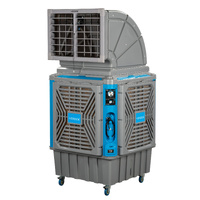





















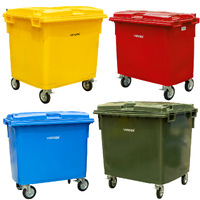












 Trolleys & Hand Trucks
Trolleys & Hand Trucks Cage Trolleys
Cage Trolleys Cleaning Carts & Trolleys
Cleaning Carts & Trolleys Construction Trolleys
Construction Trolleys Custom Trolleys
Custom Trolleys Hand Trucks & Dollies
Hand Trucks & Dollies Laundry/Linen Trolleys
Laundry/Linen Trolleys Lifting Trolleys
Lifting Trolleys Order Picking Trolleys
Order Picking Trolleys Panel Cart Trolleys
Panel Cart Trolleys Platform Trolleys
Platform Trolleys Powered Trolleys
Powered Trolleys Shelf & Tiered Trolleys
Shelf & Tiered Trolleys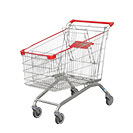 Shopping Trolleys
Shopping Trolleys Stainless Steel Trolleys
Stainless Steel Trolleys Tool Trolleys
Tool Trolleys Utility & Service Carts
Utility & Service Carts Lifting & Handling Equipment
Lifting & Handling Equipment Forklift Attachments
Forklift Attachments Jib Attachments
Jib Attachments Lifting Hoists & Pallet Hooks
Lifting Hoists & Pallet Hooks Load Skates & Tow Tugs
Load Skates & Tow Tugs Manual Stackers & Lifters
Manual Stackers & Lifters Pallet Jacks
Pallet Jacks Pallet Lifters
Pallet Lifters Pallet Rotators & Dispenser
Pallet Rotators & Dispenser Powered Pallet Trucks & Electric Lifters
Powered Pallet Trucks & Electric Lifters Scissor Lift Trolleys and Tables
Scissor Lift Trolleys and Tables Conveyor Equipment
Conveyor Equipment Conveyor Frames & Stands
Conveyor Frames & Stands Roller & Skate Conveyors
Roller & Skate Conveyors Ladders & Access Equipment
Ladders & Access Equipment Container & Yard Ramps
Container & Yard Ramps Ladders & Step Stools
Ladders & Step Stools Work Platforms & Crane Cages
Work Platforms & Crane Cages Drum Handling Equipment
Drum Handling Equipment Drum Storage & Bunding
Drum Storage & Bunding Drum Trolleys & Lifters
Drum Trolleys & Lifters Forklift Drum Handling
Forklift Drum Handling Waste Handling & Bins
Waste Handling & Bins Bin Lifters & Tippers
Bin Lifters & Tippers Plastic Waste & Wheelie Bins
Plastic Waste & Wheelie Bins Steel Waste & Tipping Bins
Steel Waste & Tipping Bins Waste Carts
Waste Carts Dangerous Goods Storage & Spillage
Dangerous Goods Storage & Spillage Aerosol Cans Storage Cages
Aerosol Cans Storage Cages Bunded Pallets & Storage
Bunded Pallets & Storage Corrosive Goods Storage Cabinets
Corrosive Goods Storage Cabinets DG Storage & Trolleys
DG Storage & Trolleys Flammable Liquid Cabinets
Flammable Liquid Cabinets Forklift Gas Storage Cages
Forklift Gas Storage Cages Site Storage
Site Storage Spill Kits
Spill Kits Shelving & Storage Equipment
Shelving & Storage Equipment Stillage & Transport Cages
Stillage & Transport Cages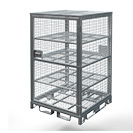 750 Series Cage Configurations
750 Series Cage Configurations Heavy Duty Cabinets
Heavy Duty Cabinets Heavy Duty Shelving
Heavy Duty Shelving Mega Bins & Pallets
Mega Bins & Pallets Packing & Workbenches
Packing & Workbenches Parts Trays & Stor-Pak Bins
Parts Trays & Stor-Pak Bins Pegboard & Louvre Panels
Pegboard & Louvre Panels Plastic Bins & Crates
Plastic Bins & Crates Plastic Handling Solutions Bins
Plastic Handling Solutions Bins Plastic Pallets
Plastic Pallets Stack & Nest Bins
Stack & Nest Bins Pallet Racking Accessories
Pallet Racking Accessories Workplace Equipment
Workplace Equipment Modular Workbenches
Modular Workbenches Electric Height-Adjustable Workbenches
Electric Height-Adjustable Workbenches Floor Matting
Floor Matting General Workplace Equipment
General Workplace Equipment Industrial Weighing Scales
Industrial Weighing Scales Packaging Machinery
Packaging Machinery Stationery Cupboards
Stationery Cupboards Storage and Stillage Cages
Storage and Stillage Cages Tool Trolleys
Tool Trolleys Tooling Cabinets
Tooling Cabinets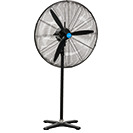 Workshop Fans and Coolers
Workshop Fans and Coolers Safety Barriers, PPE & Signage
Safety Barriers, PPE & Signage Barriers & Bollards
Barriers & Bollards First Aid Equipment
First Aid Equipment Gloves, Knives and PPE
Gloves, Knives and PPE Signage
Signage Cleaning & Site Supplies
Cleaning & Site Supplies Cleaning Equipment
Cleaning Equipment Cleaning Trolleys
Cleaning Trolleys Rubbish Bins
Rubbish Bins Signs & Traffic Supplies
Signs & Traffic Supplies Construction Equipment
Construction Equipment Construction Trolleys
Construction Trolleys Waste Handling
Waste Handling General Site Equipment
General Site Equipment Concrete Equipment
Concrete Equipment Site Storage
Site Storage Lifting Equipment
Lifting Equipment Verdex Specials
Verdex Specials










